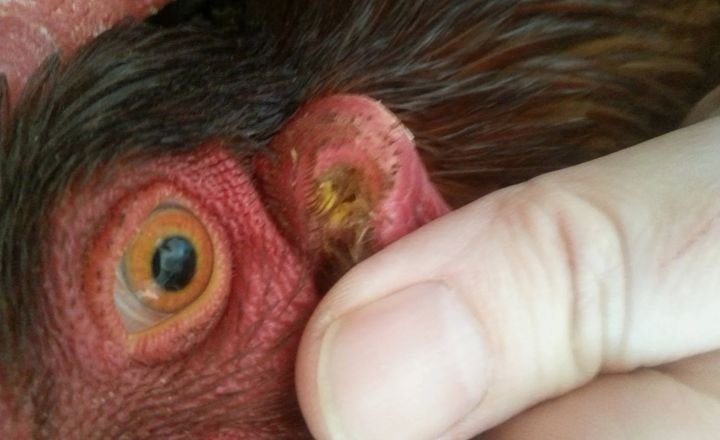Have you ever stopped to wonder about the hidden world of chickens these feathered creatures with their clucks, pecks, and distinctive waddles.
But amidst all their barnyard antics, one question tends to escape our notice: Do chickens have ears it may seem like a trivial inquiry at first glance, delving into the auditory abilities of these seemingly simple birds unveils a fascinating realm of science and discovery.
The mysterious world of chicken hearing as we unravel the truth behind this seemingly mundane yet surprisingly intriguing aspect of avian anatomy.
Do Chickens Have Ears?
Chickens may not have the typical external ears that we are accustomed to seeing on mammals, but they do possess the necessary organs to perceive sound and vibrations.
Their ability to hear is crucial for their survival and communication within their flock. Instead of visible ears, chickens have earlobes located underneath their feathers near the jawline.

It may be easy to overlook a chicken’s auditory capabilities due to their lack of external ears; their internal structures serve the same purpose of receiving and interpreting sounds.
The absence of protruding outer ears does not diminish the importance of this sense for chickens in detecting danger, locating food, and communicating with one another through a range of vocalisations.
Where Are Chickens’ Ears Located?
Chickens may not respond to your calls, but don’t be fooled; they have a keen sense of hearing that has been finely tuned through evolution. Their hidden earlobes serve a practical purpose, allowing them to stay alert and aware of their surroundings at all times.
Positioning their ears slightly lower than their eyes, chickens are able to pick up on sounds from various directions, giving them an advantage in detecting potential threats or predators.
Their lack of visible ears may lead some to underestimate their sensory capabilities, chickens have developed a sophisticated auditory system that serves as a crucial survival mechanism.
Do Newborn Chicks have ears?
As chicks grow, their hearing ability also matures, allowing them to navigate their environment more efficiently.The sound of the mother hen clucking becomes a familiar and comforting signal for the chicks, guiding them towards safety and nourishment.

The auditory connection between mother hen and chicks highlights the importance of communication in the early development stages of these young birds.
The significance of auditory cues in chick behavior sheds light on the complexity of animal communication systems.
It is fascinating to observe how hens instinctively use specific sounds to communicate crucial information to their offspring, showcasing a level of intelligence and adaptation within poultry communities.
Chicken Ears Anatomy
The fascinating similarity between chicken and human ears sheds light on the intricate structures that exist in nature. The presence of eardrums, outer ear, middle ear, inner ear, and earlobes in chickens highlights the universal principles of chicken sound transmission.
The role of the Columella in transmitting vibrations from the middle to inner ear showcases the efficiency and precision inherent in a chicken’s auditory system. It’s remarkable to consider how such a simple bone structure is responsible for decoding external stimuli into meaningful information processed by nerve endings.
This revelation invites us to marvel at the sophistication embedded in even seemingly mundane aspects of nature like chicken ears.
Do Chicken Earlobes Influence the Color of Eggs?
The correlation between earlobe colour and eggshell hue is intriguing, it also opens a window into the complex interplay of genetics in poultry.
The fact that specific genes may be tightly linked, influencing both the earlobe colour and eggshell pigmentation, highlights the intricate mechanisms at play in chicken biology.
This revelation not only sheds light on the evolutionary history of these avian species but also piques curiosity about how such genetic connections may manifest in other aspects of chicken physiology.
The exceptions to this rule, like the Ameraucanas with blue eggs but lacking blue earlobes, add a layer of mystery to this already fascinating subject.
These anomalies challenge our understanding of genetic inheritance and offer a glimpse into the unpredictability inherent in nature’s design.
As scientists continue to unravel these intricacies, perhaps one day we will uncover the underlying reasons for this curious connection between something as seemingly insignificant as an earlobe colour and the vibrant array of eggshells produced by chickens across different breeds.
Chicken Earlobes Health Checks
- The skin should not be dry, rough, and scabby but smooth.
- Colour should stay normal and not change.
- No signs of scabs and dried blood.
- They do not look ashen.
Chicken Ear infections
One crucial aspect to consider when dealing with potential ear infections in chickens is the importance of regular check-ups and proactive care. The challenge of visually inspecting a chicken’s ears, it becomes even more critical to monitor their behaviour for any signs of discomfort or distress.

By staying attentive to your flock’s well-being and seeking veterinary assistance at the first indication of an issue, you can prevent minor infections from escalating into more severe problems that may pose a threat to your chickens’ health.
Outer Ear
The agony of an outer ear infection in birds is truly heart-wrenching. Imagine the constant itchiness that compels them to scratch relentlessly, unaware of the harm they are causing themselves.
As they frantically try to alleviate the discomfort, their once-pristine feathers become matted and stained with dried blood a visible testament to their suffering.
Middle Ear
Infections that originate from the infundibular cleft, the implications can be varied and complex. Not only can chronic bacterial infections wreak havoc in this area, but tumours too can find their way into the ear through these tiny openings.
This makes it essential to understand the anatomy of this region and how such pathogens can exploit even the smallest vulnerabilities in our bodies.
Inner Ear
Inner ear infections in chickens are often triggered by viral infections, these seemingly minor health issues can have a significant impact on their overall well-being.
The neurological signs that manifest in affected chickens, such as head tilt, loss of coordination and balance, and torticollis, are not only alarming but also indicate a deeper underlying issue within the bird’s system.
Observing these symptoms can serve as crucial warning signs for poultry owners to take immediate action and seek veterinary assistance to prevent further complications.
Do Chickens Develop Hearing Loss with Age?
As humans age, the gradual deterioration of hearing is a common phenomenon, attributed to the irreversible damage incurred by hair cells in our inner ear. Chickens have evolved an extraordinary ability to repair and regenerate these crucial sensory cells in their cochlea.
This remarkable adaptation ensures that chickens maintain optimal hearing throughout their lifespan, defying the inevitable decline experienced by many ageing humans.
Do Chickens Have Good Hearing?
Chickens, often underestimated for their hearing abilities, possess a remarkable sense of sound detection that surpasses human capabilities in certain aspects. The ability to hear low-frequency sounds ranging from 10 to 12000 Hz, they showcase a unique sensitivity towards auditory stimuli below 64 Hz.
This heightened acuity allows chickens to perceive subtle cues and warnings in their environment that might go unnoticed by humans.
Summary
Do chickens have ears may not have external ears like humans do, they do possess a sophisticated auditory system that allows them to hear and respond to various sounds in their environment. Their ability to detect both low and high-frequency sounds suggests that they rely on auditory cues for communication and survival.
The understanding more about the sensory capabilities of chickens, we can better appreciate and care for these intelligent birds. The intricacies of chicken hearing could provide valuable insights into their behaviour and welfare.
FAQs
Can chickens locate the source of a sound accurately?
Chickens have a surprisingly acute sense of hearing and can locate the source of a sound with reasonable accuracy. Their ability to detect and pinpoint sounds is essential for their survival in the wild, as it helps them stay aware of potential predators or threats.
Do chicken ear structures differ from other animals’ ears?
Yes, chicken ear structures are quite different from those of other animals. Chickens do not have external ears like mammals; instead, they have small openings covered by feathers called the ear canals.
Do chickens use their sense of hearing for communication?
Yes, chickens do use their sense of hearing for communication. While they primarily rely on visual cues and body language to communicate with each other, their ability to hear plays an important role in their social interactions.
